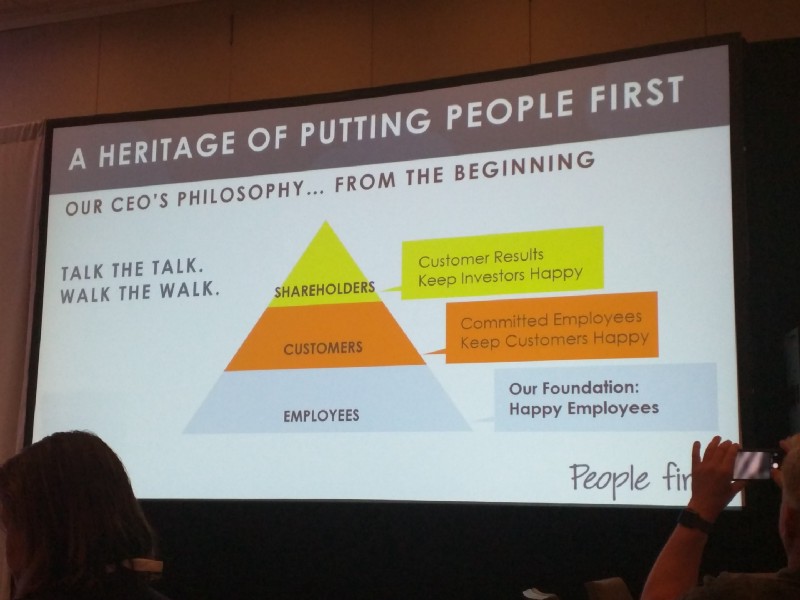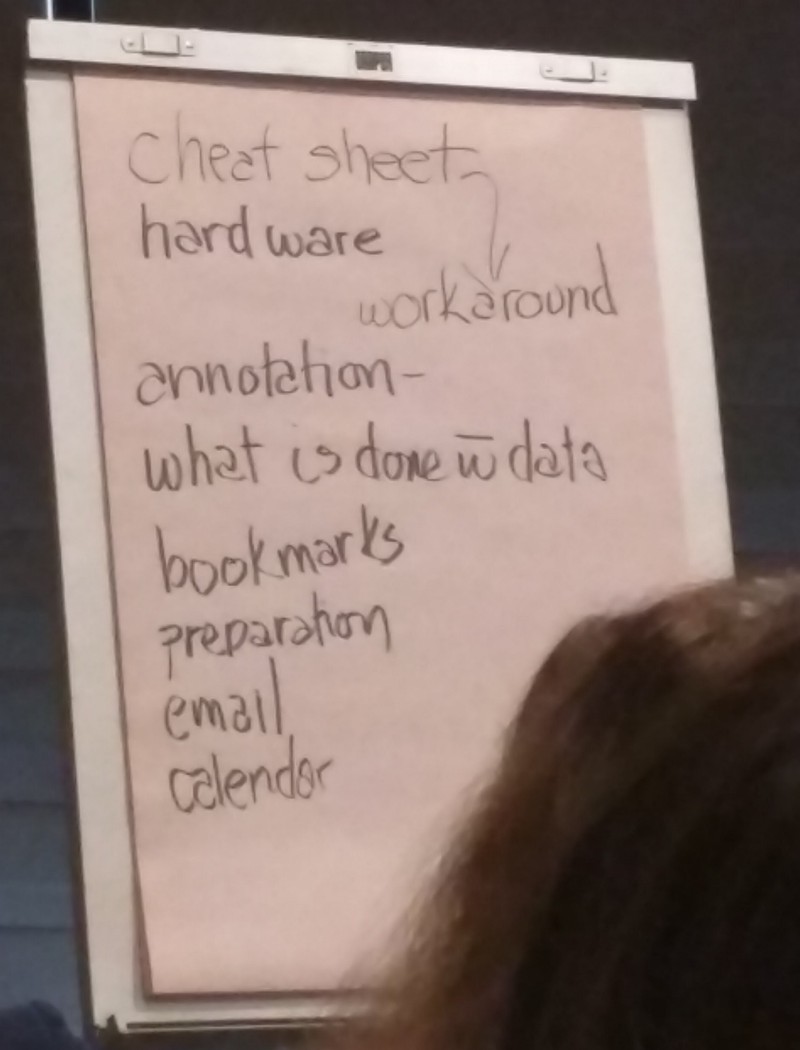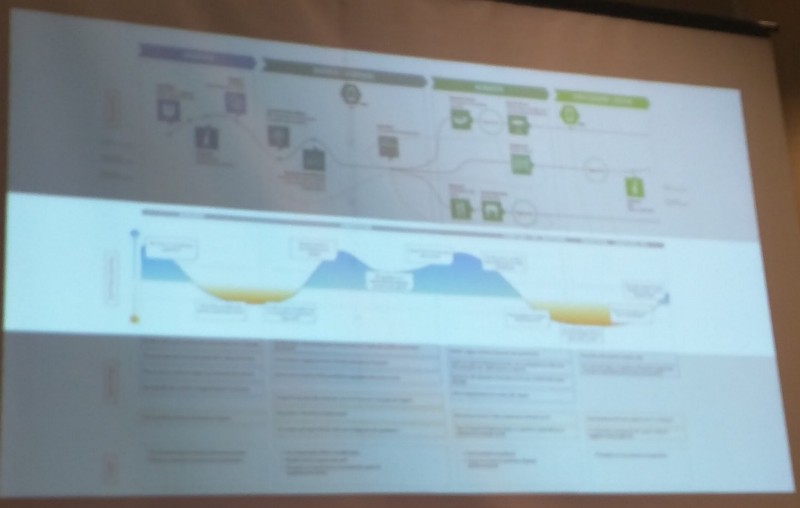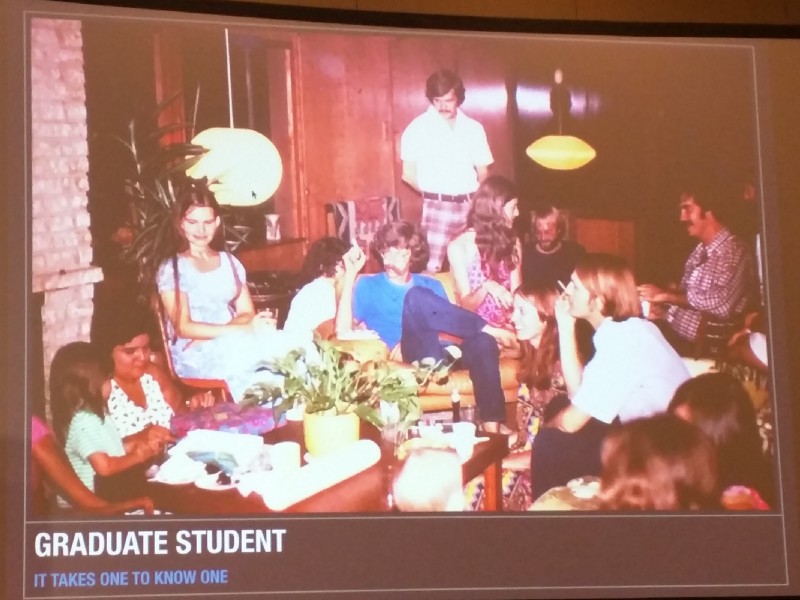UXPA 2017 — Notes from Day 2 (June 7)
Published on Jun 8, 2017
Yesterday, I posted my 5-point summary of every talk I attended at the User Experience Professional Association (UXPA) Conference — currently taking place in Toronto, ON (June 5–8). Today, I will be sharing my notes from Day 2.
Wednesday Morning Keynote: Regent Cornell
Presented by: Regent Cornell
Highly effective people take note of what happens gradually — and course correct
- GREAT companies are built on Gratitude, Respect, Engagement, Authenticity and Trust
- “Emotional capital” is a valuable resource that earns your company a “yes” when an employee is asked “would you recommend your best friend to work here?” It is built over time through relationships.
- By putting your company’s people first, your customers will be satisfied and your shareholders will profit.
- New employees must sometimes be “detoxified” to clear the bad attitude that may linger from a previous employment. A good on-boarding process is absolutely necessary to do this.
- Remote teams should meet in person once a year (or every two years), and by video call at least once a week.
 “People First” as a foundation
“People First” as a foundation
Switches, Keyguards, Eyegaze Trackers: Designing Device Interfaces for Radical Accessibility
Presented by: Yossi Langer
- To account for slower response times, comprehension delays and other variations in responses during accessibility studies, (at least) double your research time.
- “Move in with the support staff” to quickly gather insights from Subject Matter Experts. Validate these insights with real users and your own experiences with alternative device interfaces.
- One size never fits all and there are no edge cases, when you are supporting an accessible interface. Ability is a continuum and accessible designs make interfaces better for everyone.
- Generate (or follow industry) guidelines for alternative interfaces/interaction models — even if they conflict with one another. You can support a variety of use-cases by designing for calibration and customization.
- To measure the impact of accessibility-focused changes, establish (or leverage) your “customer council” to survey their desire for accessible interfaces. There may be disabled users in your user base that you don’t know about. You can also use external research to measure your market’s size and need for accessible interfaces.
This last point was actually pulled from a collaborative conversation among the audience, as we tried to find ways to support accessible interface changes in a company where accessibility might not be the main focus.
](/img/medium/1__F9m2uWRJYLQBP2K7sXY__Ug.jpeg) The entire slide deck can be found at goo.gl/k9zYsA
The entire slide deck can be found at goo.gl/k9zYsA
Becoming a Storyteller for the Design Process: Telling the Customer’s Stories
Presented by: Michael Miserendino and Susan Shapiro
- A story has a setting, characters, a plot and an ending. In the proper order (a “setup”, “middle” and “end”), the story makes sense. If delivered in the wrong order, its meaning (and impact) is lost.
- The plot consists of an escalating set of obstacles that the characters encounter within a setting.
- Artifacts enhance a story by providing a relatable representation of a particular setting, character or obstacle for the audience to connect with emotionally.
- Build a story with roleplaying by inviting the designer, researcher, developer or decision maker to do what the character does, in a real or simulated environment.
- Share the story with your organization by connecting with stakeholder metrics (i.e. in a score card) and the reality of current project work (i.e. by starting meetings with a retelling of the story).
 Examples of artifacts that we use to convey our stories
Examples of artifacts that we use to convey our stories
Make it measurable: Experience Design Metrics
Presented by: Roberta Capellini, Silvia Soccol and Francesca Tassistro
- Metrics should map to the experience they are trying to capture. To do this, a “Smile Scorecard” can be generated by combining the following measurements:
- Together, these scores measure both explicit and implicit reactions to a given experience. These map, respectively, to the conscious (foreground) and unconscious (background) cognitions of a participant.
- IAT is determined by the response time between the time when a stimulus is presented and when the user sorts it into a category.
- Sometimes it is difficult to prove the value of an investment in a product or service’s user experience. By applying the Smile Scorecard to each touch point within a customer journey map, changes in the user experience can be reviewed, tracked and compared.
- The standard approach to the scorecard is used to measure the overall impact on UX for a given change. The custom approach, which incorporates multiple IATs that correlate to a company’s KPIs, can measure more specific improvements.
 How the smile scorecard can be incorporated into a journey map
How the smile scorecard can be incorporated into a journey map
“Inside the UX Studio”: An interview with Dr. Randolph Bias, 2017 UXPA Lifetime Achievement Award recipient
Presented by: Chris Hass with Randolph Bias, Ph.D., CHFP
The reason I got into this was because I knew nothing about it
- On certifications vs higher education — UX is a complex skillset and it’s doubtable that it can be learned in just a few weeks. On the job, UX is not just doing the tasks of conducting a study or gathering requirements. By earning a degree in higher education, graduating students learn how to discern between methodologies and support findings with their practice.
- On how much to talk in a meeting (the “airtime” rule) — If there are N number of people in the room, one should talk only 1/Nth of the time. If you cross 2/N, there’s a problem. If you’re talking more than 3/N of the time, you need to reel yourself in.
- Advice for graduates (and practitioners) 1 — Back in the day, the question was “should we do a usability study or not?” Nowadays, the question is “which type of usability study should we do?” Our field needs to get better at determining which techniques are most effective in particular contexts.
- Advice for graduates (and practitioners) 2— As a UX practitioner, you must advocate for your results. You can’t just throw your priorities over the fence. Sometimes, you have to compromise and be a team player.
- Advice for graduates (and practitioners) 3— When teaching, it’s important to make sure that you’re providing value to the students, who made all the effort to “put pants on, park their car and walk to class.” True education happens within interactions among students, with the professor providing the necessary metaphors and allegories to tie discussions together.
 Do you remember this party? “No”
Do you remember this party? “No”
There’s always tomorrow…
Tomorrow is the last day of the conference and I am excited to share what comes next to all those who have taken the time to read (or skim) these notes.
If you think I missed something important, summarized something wrong, or just want to start a relevant conversation… feel free to leave a comment, below!

